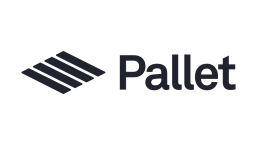Big Banks Explore Interoperable Stablecoin

In a move that could disrupt the crypto and stablecoin landscape, major U.S. banks are exploring the creation of a consortium-backed stablecoin, according to a report from The Wall Street Journal. The discussions involve some of the nation’s largest financial institutions, including J.P. Morgan Chase, Bank of America, Citigroup, and Wells Fargo, as well as jointly owned entities such as Early Warning Services, which operates peer-to-peer payment system Zelle, and The Clearing House.
The talks among banks remain at an early, exploratory stage, and any formal decision to move forward would depend heavily on legislative developments surrounding digital assets. The fate of the GENIUS Act, a bill that recently advanced in the Senate, is especially significant.
According to the Journal, and as reported in PYMNTS, the proposed legislation would set a clear regulatory framework for stablecoin issuance by both banks and nonbank entities. While the latest draft includes restrictions aimed at preventing nonfinancial public companies from entering the stablecoin market freely, it stops short of the outright ban that some bank lobbyists had sought.
Banks have become increasingly wary of stablecoins potentially capturing a significant share of deposits and payment volumes traditionally held by regulated financial institutions, particularly if tech giants or major retailers enter the arena. This apprehension has intensified since a regulatory crackdown two years ago left banks trailing in the rapidly growing digital currency space.
Stablecoins, designed to maintain a one-to-one value with traditional currencies like the U.S. dollar, are typically backed by reserves of cash or highly liquid assets such as Treasury securities. Banks see stablecoins as a promising mechanism for streamlining and speeding up cross-border transactions, payments settlements, and other routine financial processes currently burdened by slow settlement times.
The Journal also highlighted that smaller banks, including regional and community institutions, have contemplated their own stablecoin consortia. However, such efforts face greater challenges due to resource constraints and the complexity of navigating regulatory compliance. The possibility of Wall Street banks banding together to issue a stablecoin further highlights the narrowing gap between traditional finance and digital currency markets, reflecting a strategic shift by banks to defend their turf against competition from innovative fintechs and major technology firms.
The report follows earlier developments this week that R3 and Solana Foundation have partnered to bring regulated real-world assets onto a public blockchain. This collaboration will bring together R3’s private enterprise blockchain, which is used by regulated financial institutions, and the Solana public mainnet, the organizations said in a Thursday (May 22) press release.
The combination of their capabilities will help regulated financial institutions meet the demand for tokenized real-world assets, according to the release. The R3 ecosystem of permissioned real-world asset networks currently has over $10 billion in regulated assets on-chain across its platforms, the release said. The Solana blockchain serves a range of use cases, including finance, NFTs, payments and gaming, per the release.
Solana Foundation President Lily Liu said in the release that the collaboration of the two organizations “signifies that the future of capital markets will be built on public infrastructure.”
“This is a major step forward for the institutional adoption of public blockchain,” Liu said. “R3’s decision to bring its regulated financial network onto Solana is a powerful validation that public blockchains have reached institutional readiness.”



